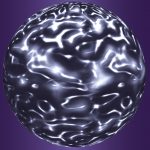Lien vers Pubmed [PMID] – 30381358
J. Cell. Sci. 2018 Oct;132(4)
Autophagy is one of the most elaborative membrane remodeling systems in eukaryotic cells. Its major function is to recycle cytoplasmic material by delivering it to lysosomes for degradation. To achieve this, a membrane cisterna is formed that gradually captures cargo such as organelles or protein aggregates. The diversity of cargo requires autophagy to be highly versatile to adapt the shape of the phagophore to its substrate. Upon closure of the phagophore, a double-membrane-surrounded autophagosome is formed that eventually fuses with lysosomes. In response to environmental cues such as cytotoxicity or starvation, bulk cytoplasm can be captured and delivered to lysosomes. Autophagy thus supports cellular survival under adverse conditions. During the past decades, groundbreaking genetic and cell biological studies have identified the core machinery involved in the process. In this Review, we are focusing on reconstitution approaches to decipher the details and spatiotemporal control of autophagy, and how such studies contributed to our current understanding of the pathways in yeast and mammals. We highlight studies that revealed the function of the autophagy machinery at a molecular level with respect to its capacity to remodel membranes.

